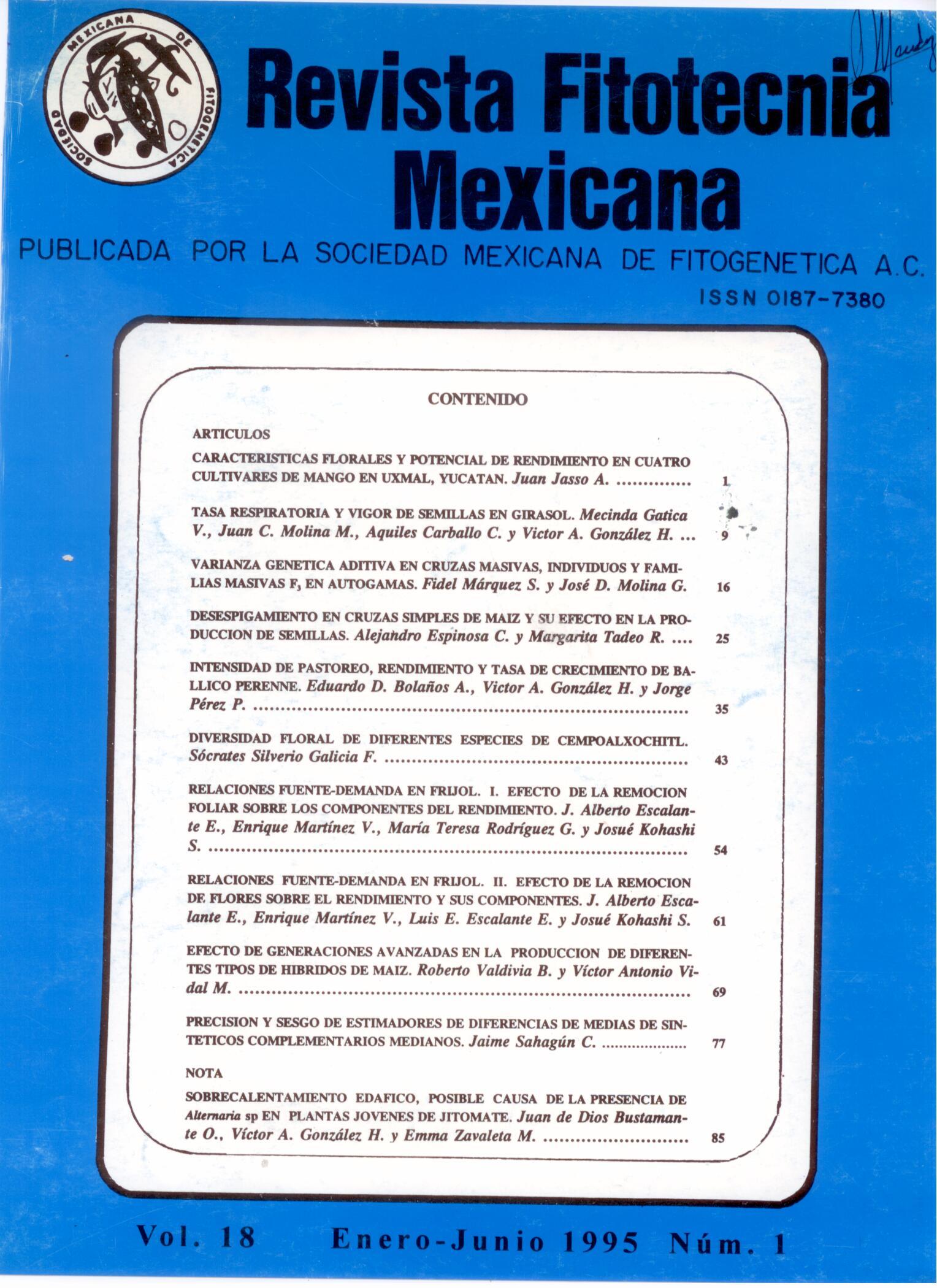ADDITIVE GENETICS VARIANCE OF BULK CROSSES, INDIVIDUALS AND F3 BULK FAMILIES OF AUTOGAMOUS
Main Article Content
Abstract
In the traditional pedigree method of selection in autogamous plants, problems arise in visually selecting individual plants from the F2 generation to the F6 or F7 generations. In more advanced generations homozygous lines are derived and evaluated in yield
trials. In order to make the individual selection, space-planting is made at population densities much lower than the commercial ones. On the other hand, choice of parental lines is usually based on the experience and ability of the breeder to identify the
objectives of the genetic improvement and to evaluate the involved traits; quantitative evaluations of the crosses among the parental lines are not usually made. In this respect, general combining ability of the parental lines and the peformance of their bulk
crosses have been suggested as a means of evaluating the progenitors. In the latest it is necessary to know the amount of additive genetic variance that is generated through the selfed generations of the bulk crosses, in order to appreciate the possibilities of success in selecting the best bulk crosses. lt is the purpose of this theoretical research to calculate the additive genetic variance among bulk crosses and to compare it with the additive genetic variance among individual plants within bulk crosses as well as among F2-derived lines (F3 bulk families). Results indicate that with the exception of the case when the parental lines with dominant loci are present in very low proportions, previous selection among bulk crosses is better than selection among individual plants within bulk crosses, and it is always higher than selection among F2 derived lines within bulk crosses. Therefore, it is recommended to initiate the process with selection among bulk crosses and then to make selection among F2-derived lines within the best bulk crosses.

